2,3-Butanedione
Synonym(s):2,3-Butanedione, 2,3-Butadione, Dimethyldiketon, Dimethylglyoxal;Biacetyl;Diacetyl
- CAS NO.:431-03-8
- Empirical Formula: C4H6O2
- Molecular Weight: 86.09
- MDL number: MFCD00008756
- EINECS: 207-069-8
- SAFETY DATA SHEET (SDS)
- Update Date: 2025-12-17 09:49:40

What is 2,3-Butanedione?
Description
2,3-Butanedione, also known as Diacetyl, is a reactive diketone in artificial butter flavors. It is a water-soluble and volatile, alpha-diketone compound that has a buttery odor. Diacetyl occurs naturally in plants, fruits, coffee, honey, cocoa, and dairy products. It is a natural by-product of fermentation and is found in beer and wine. Diacetyl is also present in cigarette smoke.
Diacetyl can be synthesized by converting 2-butanone to an isonitroso compound and then hydrolyzing it with hydrochloric acid. Other methods for producing diacetyl include oxidation of 2-butanone over a copper catalyst at 300°C and dehydrogenation of 2,3-butanediol over a copper or silver catalyst. In addition, diacetyl can be synthesized through the acid catalyzed condensation of 1-hydroxyacetone and formaldehyde. Naturally occurring diacetyl is also available from starter distillate, a by-product of dairy product fermentation. Although diacetyl and starter distillates are liquids, they can be converted to a powdered form by encapsulating them within a solid material to prevent volatility. Diacetyl in powdered form is also found in flavorings that have been spray dried. The boiling point of diacetyl is 88°C with a calculated vapor pressure of 55 mmHg at 20°C.
Description
Diacetyl, or 2,3-butanedione, is a yellow-green liquid with a quinine-like odor. It is a component of butter, natural oils, and alcoholic beverages. Food manufacturers often add diacetyl to foods to impart a buttery taste. It has been linked however, to a rare, fatal lung disease suffered by microwave popcorn plant workers; this use was discontinued in 2006. More recently, R. Vince and co-workers at the University of Minnesota found that?diacetyl accelerates amyloid-β aggregation in Alzheimer’s disease patients.
Chemical properties
2,3-Butanedione has a very strong buttery odor in very dilute solution. It is a constituent of many fruit and food aromas and well-known as a constituent of butter. Many methods are known for itsmanufacture, for example, dehydrogenation of 2,3-butanediol with a copper chromite catalyst. Biotechnological production on an industrial scale is referred. It is used mainly in aromas for butter and roasted notes. Large quantities are used for flavoring margarine; small amounts are used in perfumes.
Occurrence
Reported in the oils of: Finnish pine, angelica and lavender; in the flowers of Polyalthia canangioides Boerl. var. angustifolia and Fagroea racemosa Jack. The following plants are also reported to contain diacetyl: Monodora grandiflora Benth., Magnolia tripetale L., Ximenia aegyptiaca L., Petasites fragrans Presl., various narcissi and tulips. It has been identified in certain types of wine, the natural aromas of raspberry and strawberry, and the oils of lavender, lavandin, Réunion geranium, Java citronella, and Cistus ladaniferus L. It is also reported to be found in ligonberry, guava, raspberry, strawberry, cabbage, peas, tomato, vinegar, various cheeses, yogurt, milk, butter, chicken, beef, mutton, pork, cognac, beer, wines, whiskies, tea and coffee.
The Uses of 2,3-Butanedione
2,3-Butanedione is a flavoring agent that is a clear yellow to yellowish green liquid with a strong pungent odor. It is chemically synthesized from methyl ethyl ketone. It is miscible in water, glycerin, alcohol, and ether, and in very dilute water solution it has a typical buttery odor and flavor. It is used as Carrier of aroma of butter, vinegar, coffee, and other foods. It is also used Inactivates aminopeptidase-N, precursor to α-diones, Cyclocondensation with amines has been used to form triazine and pteridine ring systems.
What are the applications of Application
2,3-Butanedione is a byproduct of fermentation
Definition
ChEBI: 2,3-Butanedione is an alpha-diketone that is butane substituted by oxo groups at positions 2 and 3. It is a metabolite produced during the malolactic fermentation. It has a role as a Saccharomyces cerevisiae metabolite and an Escherichia coli metabolite.
Preparation
From methyl ethyl ketone by converting to the isonitroso compound and then decomposing to diacetyl by hydrolysis with HCl; by fermentation of glucose via methyl acetyl carbinol.
What are the applications of Application
2,3-Butanedione is very common in Nature,
although usually in trace amounts only: in
essential oils, flower absolutes, dairy products,
meat and fruits, etc.
It finds some use in perfumery - mainly
in the re-construction of essential oils (artificial essential oils and flower absolutes).
Lavender, Lavandin, Bay, Orris and many
other oils contain traces of this ketone.
Finds extensive use in flavor compositions,
primarily in imitation Butter, Milk, Cream.
Cheese, etc. Also in Berry flavors, Butterscotch, Caramel, Chocolate, CotTee, Cherry, Fruit, Honey, Liquor, Tobacco, Rum, Wine,
Nut, Almond, Spice, Ginger Ale, Cream Soda,
Vinegar, Vanilla, Buttermilk, etc.
Normal concentration in consumer product
will be about 3 to 30 ppm, while it may be as
high as 40 to 50 ppm in baked goods. imitation
Butter may contain about 6 to 9 prm.
Aroma threshold values
Detection: 0.3 to 15 ppb: recognition: 5 ppb
Taste threshold values
Taste characteristics at 50 ppm: sweet, buttery, creamy and milky.
General Description
2,3-Butanedione appears as a clear colorless liquid with a strong?chlorine-like odor. Flash point 80 °F. Less dense than?water. Vapors heavier than air.
Air & Water Reactions
Highly flammable. Soluble in water.
Reactivity Profile
2,3-Butanedione is a flammable liquid, b.p. 88° C, moderately toxic. When heated to decomposition 2,3-Butanedione emits acrid smoke and fumes [Sax, 9th ed., 1996, p. 544].
Health Hazard
Inhalation or contact with material may irritate or burn skin and eyes. Fire may produce irritating, corrosive and/or toxic gases. Vapors may cause dizziness or suffocation. Runoff from fire control may cause pollution.
Fire Hazard
HIGHLY FLAMMABLE: Will be easily ignited by heat, sparks or flames. Vapors may form explosive mixtures with air. Vapors may travel to source of ignition and flash back. Most vapors are heavier than air. They will spread along ground and collect in low or confined areas (sewers, basements, tanks). Vapor explosion hazard indoors, outdoors or in sewers. Runoff to sewer may create fire or explosion hazard. Containers may explode when heated. Many liquids are lighter than water.
Safety Profile
A poison by ingestion and intraperitoneal routes. A skin irritant. Human inhalation hazard in popcorn manufacture. Human mutation data reported. Flammable liquid. Dangerous fire hazard when exposed to heat or flame. To fight fire, use alcohol foam, CO2, dry chemical. When heated to decomposition it emits acrid smoke and fumes. See also KETONES.
Toxicology
Diacetyl is an intensely yellowish or greenish-yellow mobile liquid. It has a very powerful and diffusive, pungent, buttery odor and typically used in flavor compositions, including butter, milk, cream, and cheese. Diacetyl was found to be mutagenic in Ames test conducted under various different conditions with Salmonella typhimurium strains. For example, diacetyl was mutagenic by TA100 in the absence of S9 metabolic activation at doses up to 40 mM/plate. It was mutagenic in a modified Ames assay in Salmonella typhimurium strains TA100 with and without S9 activation. The acute oral LD50 of diacetyl in guinea pigs was calculated to be 990 mg/kg. The acute oral LD50 of diacetyl in male rats was calculated to be 3400 mg/kg, and in female rats, the LD50 was calculated to be 3000 mg/kg. When male and female rats were administered via gavage a daily dose of 1, 30, 90, or 540 mg/kg/day of diacetyl in water for 90 days, the high-dose produced anemia, decreased weight gain, increased water consumption, increased leukocyte count, and an increase in the relative weights of liver, kidneys, and adrenal and pituitary glands. The data for teratogenicity and carcinogenicity are not available. Although the FDA has affirmed diacetyl GRAS as a flavoring agent, low molecular weight carbonyls, such as formaldehyde, acetaldehyde, and glyoxal have been reported to possess a certain chronic toxicity.
Potential Exposure
Tumorigen,Drug, Mutagen, Primary Irritant. Butanedione is used as anaroma carrier food additive in butter, vinegar, coffee, andother foods.
First aid
If this chemical gets into the eyes, remove anycontact lenses at once and irrigate immediately for at least15 min, occasionally lifting upper and lower lids. Seekmedical attention immediately. If this chemical contactsthe skin, remove contaminated clothing and wash immediately with soap and water. Seek medical attention immediately. If this chemical has been inhaled, remove fromexposure, begin rescue breathing (using universal precautions,including resuscitation mask) if breathing hasstopped and CPR if heart action has stopped. Transferpromptly to a medical facility. When this chemical hasbeen swallowed, get medical attention. Give large quantities of water and induce vomiting. Do not make an unconscious person vomit.
Carcinogenicity
Diacetyl was tested for its ability to induce primary lung tumors in strain A/He mice. The mice received three IP injections of diacetyl per week for 8 weeks and were killed 24 weeks after the first injection. The total dose of diacetyl given was 1.7 or 8.4 g/kg. The number of lung tumors in diacetyl exposed mice was not significantly different from the control mice.
Inhalation carcinogenicity bioassays withWistar Han rats and B6C3F1 mice at exposure levels of 0, 12.5, 25, and 50 ppm are underway according to the National Toxicology Program.
Environmental Fate
Mechanisms of diacetyl-induced toxicity are not known, but some possible mechanisms of toxicity have been postulated. The adjacent carbonyl groups on diacetyl make it a reactive compound. In vitro studies have demonstrated that diacetyl can bind to arginine and inactivate proteins. The electron affinity of diacetyl suggests that it can undergo electron transfer activity, which can lead to oxidative stress by oxygen redox cycling. Redox cycling and oxidative stress may also be initiated during metabolism of diacetyl by DCXR (dicarbonyl/L-xylulose reductase). Reactive oxygen species are known to be produced from metabolic activation of dicarbonyl substrates by related carbonyl reductase enzymes in the presence of O2.
Storage
Color Code—Red: Flammability Hazard: Storein a flammable liquid storage area or approved cabinetaway from ignition sources and corrosive and reactivematerials. Store in tightly closed containers in a cool,well-ventilated area. Sources of ignition, such as smokingand open flames, are prohibited where Butanedione isused, handled, or stored in a manner that could createa potential fire or explosion hazard. Metal containersinvolving the transfer of=gallons or more of butanedioneshould be grounded and bonded. Drums must be equippedwith self-closing valves, pressure vacuum bungs andflame arresters. Use only nonsparking tools and equipment,especially when opening and closing containers ofButanedione. Wherever butanedione is used, handled,manufactured, or stored, use explosion-proof electricalequipment and fittings.
Shipping
Butanedione must be labeled “FLAMMABLELIQUID.” It falls in Hazard Class 3 and Packing Group II.
Purification Methods
Dry biacetyl over anhydrous CaSO4, CaCl2 or MgSO4, then distil it in a vacuum under nitrogen, taking the middle fraction and storing it at Dry-Ice temperature in the dark (to prevent polymerization). [Beilstein 1 IV 3644.]
Toxicity evaluation
Diacetyl released to the environment is expected to be highly mobile in soil and is not expected to adsorb to suspended sediments and solids in water. Diacetyl is degraded by a bacterium tentatively identified as Pseudomonas. Bioconcentration of diacetyl by aquatic organisms is not likely. Diacetyl is expected to volatilize from soil and water surfaces, and diacetyl is likely to exist solely as a vapor in the ambient atmosphere. In the atmosphere, diacetyl is degraded by photochemically produced hydroxyl radicals and it undergoes photolysis.
Incompatibilities
Contact with oxidizers may cause fireand explosions. High heat may cause violent combustion orexplosion.
Properties of 2,3-Butanedione
| Melting point: | -4--2 °C |
| Boiling point: | 88 °C(lit.) |
| Density | 0.985 g/mL at 20 °C |
| vapor density | 3 (vs air) |
| vapor pressure | 52.2 mm Hg ( 20 °C) |
| refractive index | n |
| FEMA | 2370 | DIACETYL |
| Flash point: | 45 °F |
| storage temp. | Store at +2°C to +8°C. |
| solubility | 200g/l |
| form | Liquid |
| color | Clear yellow |
| Odor | at 1.00 % in propylene glycol. strong butter sweet creamy pungent caramel |
| Odor Threshold | 0.00005ppm |
| explosive limit | 2.4-13.0%(V) |
| Water Solubility | 200 g/L (20 ºC) |
| Merck | 14,2966 |
| JECFA Number | 408 |
| BRN | 605398 |
| Exposure limits | ACGIH: TWA 0.01 ppm; STEL 0.02 ppm NIOSH: TWA 5 ppb; STEL 25 ppb |
| Stability: | Stable. Flammable. Incompatible with acids, strong bases, metals, reducing agents, oxidizing agents. Protect from moisture and water. Note low flashpoint. |
| CAS DataBase Reference | 431-03-8(CAS DataBase Reference) |
| NIST Chemistry Reference | 2,3-Butanedione(431-03-8) |
| EPA Substance Registry System | 2,3-Butanedione (431-03-8) |
Safety information for 2,3-Butanedione
| Signal word | Danger |
| Pictogram(s) |
 Flame Flammables GHS02  Corrosion Corrosives GHS05  Skull and Crossbones Acute Toxicity GHS06  Health Hazard GHS08 |
| GHS Hazard Statements |
H225:Flammable liquids H302:Acute toxicity,oral H315:Skin corrosion/irritation H317:Sensitisation, Skin H318:Serious eye damage/eye irritation H331:Acute toxicity,inhalation H373:Specific target organ toxicity, repeated exposure |
| Precautionary Statement Codes |
P210:Keep away from heat/sparks/open flames/hot surfaces. — No smoking. P280:Wear protective gloves/protective clothing/eye protection/face protection. P314:Get medical advice/attention if you feel unwell. P301+P312:IF SWALLOWED: call a POISON CENTER or doctor/physician IF you feel unwell. P305+P351+P338:IF IN EYES: Rinse cautiously with water for several minutes. Remove contact lenses, if present and easy to do. Continuerinsing. |
Computed Descriptors for 2,3-Butanedione
| InChIKey | QSJXEFYPDANLFS-UHFFFAOYSA-N |
2,3-Butanedione manufacturer
JSK Chemicals
New Products
Indole Methyl Resin tert-butyl 9-methoxy-3-azaspiro[5.5]undecane-3-carboxylate Boc-His(Boc)-OH 2-CTC Resin 4-Chloro-7-tosy1-7Hpyrrolo[2,3-d]pyrimidine 5,7-Dibromo-1H-indole 2,5-dichloro-N-hydroxy-4,6-dimethylpyridine-3-carboximidamide 2,2-Dimethoxy-7-azaspiro[3.5]nonane hydrochloride 4-chloromethyl-5-methyl-1,3-dioxol-2-one (DMDO-Cl) R-2-BENZYLOXY PROPIONIC ACID 1,1’-CARBONYLDIIMIDAZOLE 1,1’-CARBONYLDI (1,2-4 TRIAZOLE) N-METHYL INDAZOLE-3-CARBOXYLIC ACID 4-((2-hydroxyethyl)thio)benzoic acid 1-(TERT-BUTOXYCARBONYL)-2-PYRROLIDINONE Methyl 6-methylnicotinate 3-Pyridineacrylic acid tert-Butyl carbazate TETRAHYDRO-2H-PYRAN-3-OL 2-((4-morpholinophenylamino) (methylthio) methylene) malononitrile 3-(4-morpholinophenylamino)-5-amino-1H-pyrazole-4-carbonitrile 2,4-dihydroxybenzaldehyde 1,3-Diethyl-1,3-Diphenylurea Methyl 2-methylquinoline-6-carboxylateRelated products of tetrahydrofuran

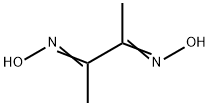

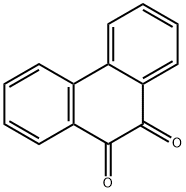
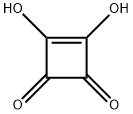

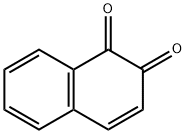
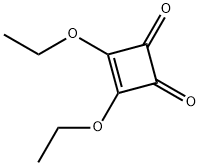
You may like
-
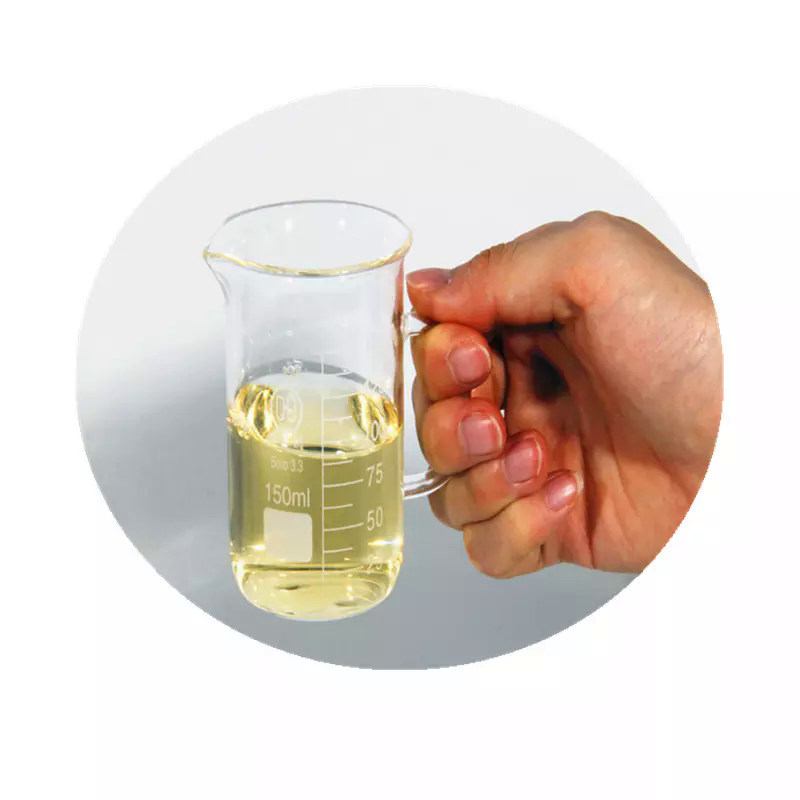 431-03-8 99%View Details
431-03-8 99%View Details
431-03-8 -
 431-03-8 2,3-Butanedione, 96% 99%View Details
431-03-8 2,3-Butanedione, 96% 99%View Details
431-03-8 -
 Diacetyl CAS 431-03-8View Details
Diacetyl CAS 431-03-8View Details
431-03-8 -
 Diacetyl CAS 431-03-8View Details
Diacetyl CAS 431-03-8View Details
431-03-8 -
 Diacetyl 98% CAS 431-03-8View Details
Diacetyl 98% CAS 431-03-8View Details
431-03-8 -
 DIACETYL For Synthesis CAS 431-03-8View Details
DIACETYL For Synthesis CAS 431-03-8View Details
431-03-8 -
 2,3-Butanedione CAS 431-03-8View Details
2,3-Butanedione CAS 431-03-8View Details
431-03-8 -
 Thiourea 99% ARView Details
Thiourea 99% ARView Details
62-56-6
